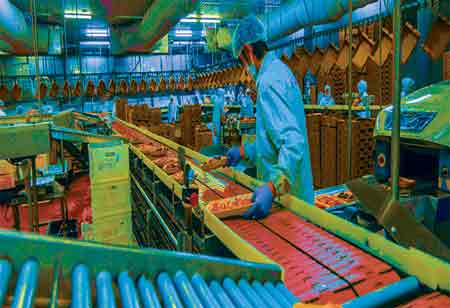THANK YOU FOR SUBSCRIBING
Be first to read the latest tech news, Industry Leader's Insights, and CIO interviews of medium and large enterprises exclusively from Food and Beverage Tech Review
The Ultimate List of Ideal Yeast Extracts for Food Manufacturing
Yeast extracts have gained popularity since being introduced to the market in the 1950s and are now a crucial component

By
Food and Beverages Tech Review | Tuesday, July 23, 2024
Stay ahead of the industry with exclusive feature stories on the top companies, expert insights and the latest news delivered straight to your inbox. Subscribe today.
This article provides an overview of the different types of yeast extract available for food manufacturing and tips on selecting the best extract for a particular recipe.
Fremont, CA: Yeast extracts have gained popularity since being introduced to the market in the 1950s and are now a crucial component used by food formulators to create delectable, nutritious, clean-label dishes. Because of its special qualities and intricate makeup, yeast extract is a natural substance that can be helpful in many different applications. It comes from fresh yeast, a naturally occurring non-GMO, dairy-free, gluten-free, and vegan foodstuff.
In the list of sweet and savory items, yeast extract is used to improve flavor, add freshness, minimize or remove the need for excessive amounts of salt, sugar, and fat, and mask off flavors. Yeast extract is frequently used to enhance the flavor of meat or cheese in meat replacements and animal-free products because it is entirely vegan. Because of this, food formulators now use it as one of the key ingredients to create a fully realized flavor profile in their food and beverage products. Without chemical additives or flavor enhancers, yeast extract produces wholesome, nutrient-dense, and delicious products. That's what the astute shoppers of today are searching for. They offer a good supply of complete protein as well.
Yeast extracts are utilized in low-fat, low-sugar, and low-salt goods to generate taste and flavor, as well as high-protein snacks, dairy substitutes, and alternative beverages. Because of its complicated features, it is crucial to select the appropriate yeast extract (or mixture).
When buying yeast extracts, some factors to think about could be as follows:
The Type of Yeast Ingredient Required:
Your first concern should be whether yeast extracts are appropriate for your finished product. There are numerous varieties of yeast products, such as dried yeast, protein, bark, extracts, and more. The intended use, the finished product's texture, and flavor all play a role in selecting the appropriate product.
Ingredient Form: Powder, Particulate, Liquid, Semi-Liquid or Paste?
The final yeast extract's shape is a crucial consideration as well. Depending on the intended use or commercial procedure, the product may be a powder, particle, liquid, semi-liquid, or paste. Following the typical processes of evaporation and concentration, paste and liquid forms are produced. Powders need an extra action step: Spray drying turns a yeast extract into a dry extract using hot air to evaporate the water. This process impacts the final product's texture and appearance. The final product's color and structure, consistency, liquid solubility, concentration of nutrients, and ease of transport are all affected by the form of component used. Particulates, for instance, dissolve better in water than powders, although pastes and liquids might work better in sauces.
Form or Packaging of Yeast:
The packaging should be considered while selecting the best yeast extract product. Naturally, the format will impact how the yeast extract is packaged and stored. For instance, pastes and liquids can be kept in drums, IBCs, or other tanks, whereas powders and particles can be packaged in bags. The format must be compatible with your current procedures and supply chain. The format and packaging selection may also impact the amount of space needed and the cost of transporting and storing yeast extracts.
I agree We use cookies on this website to enhance your user experience. By clicking any link on this page you are giving your consent for us to set cookies. More info







